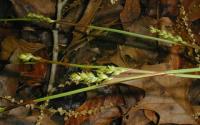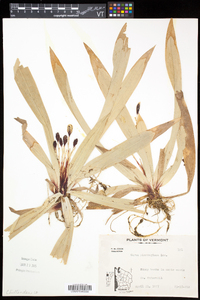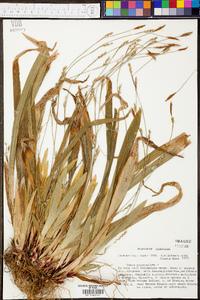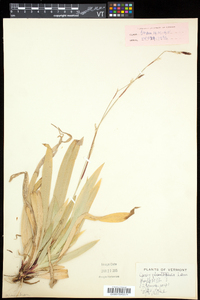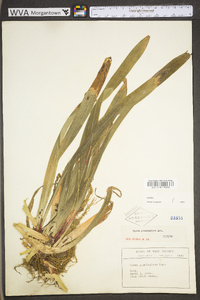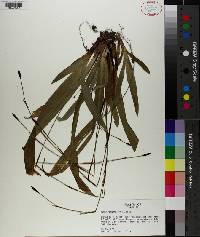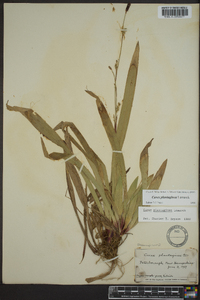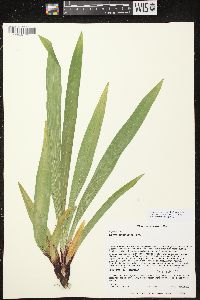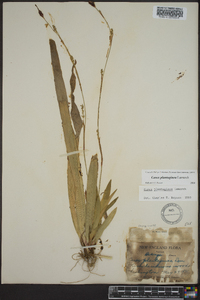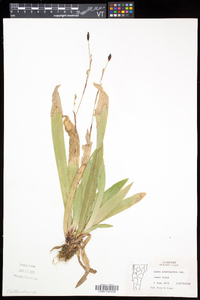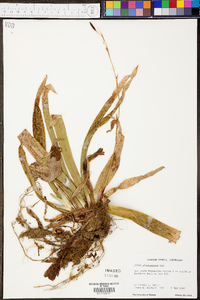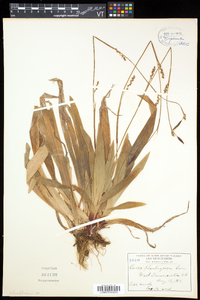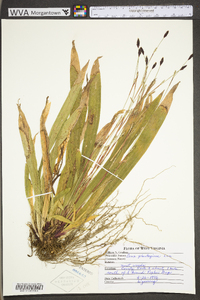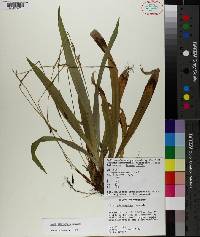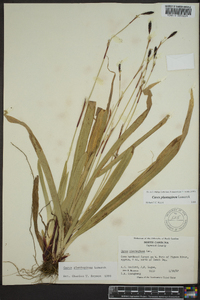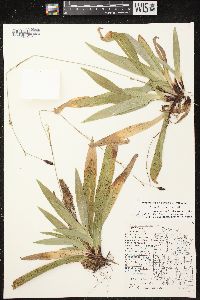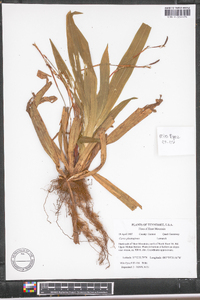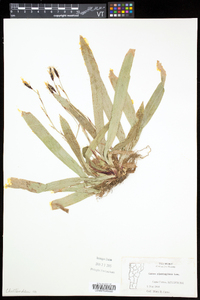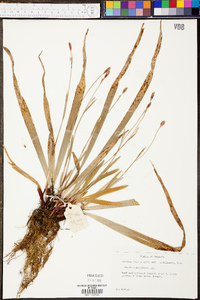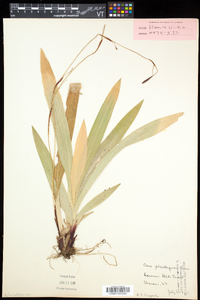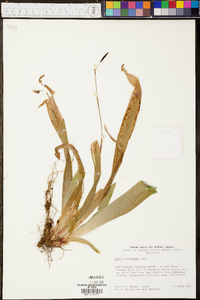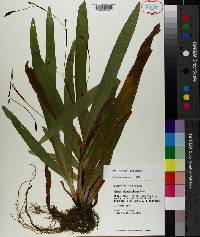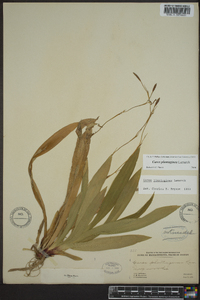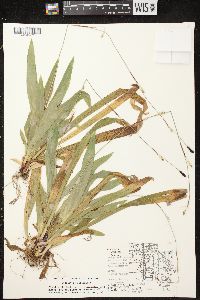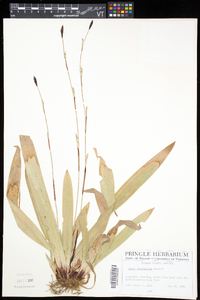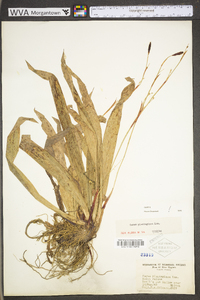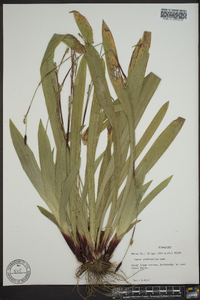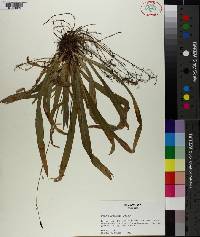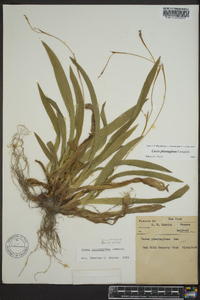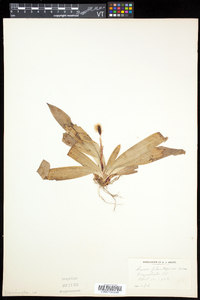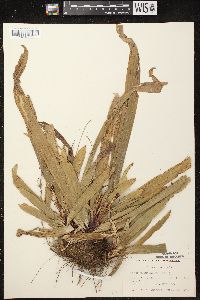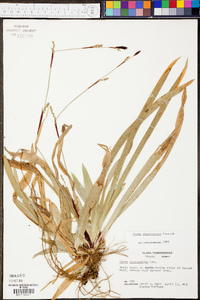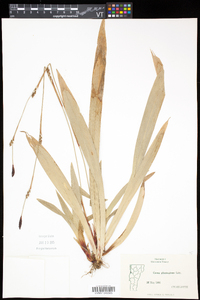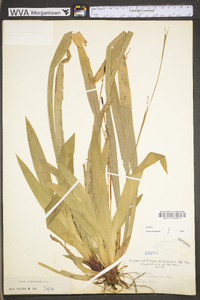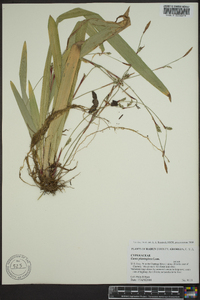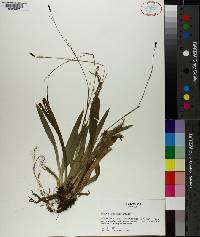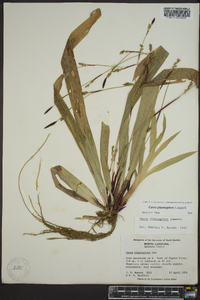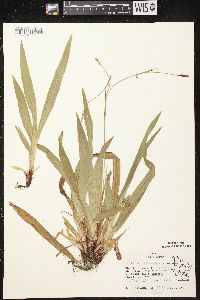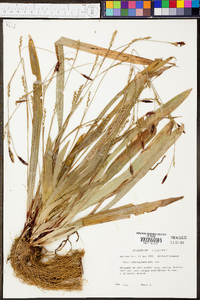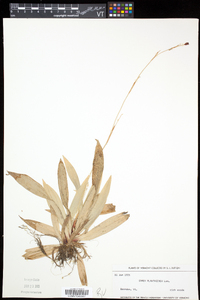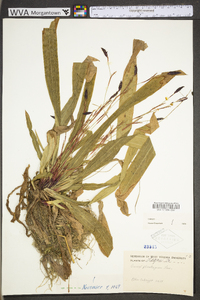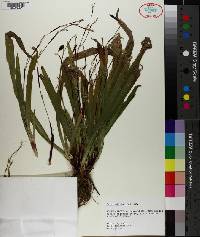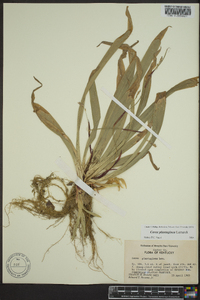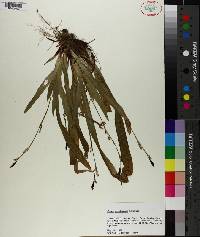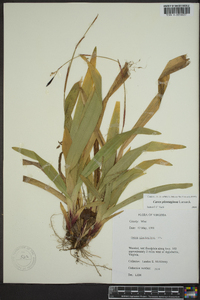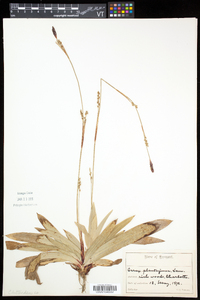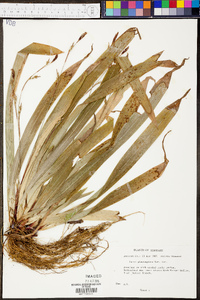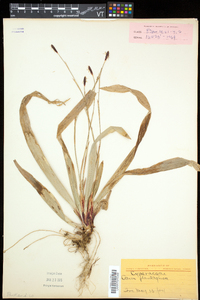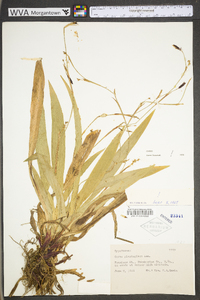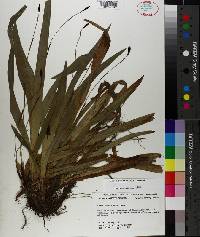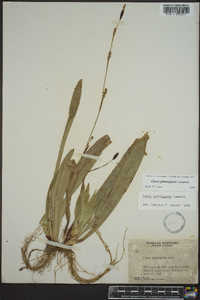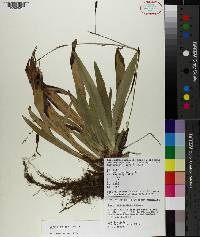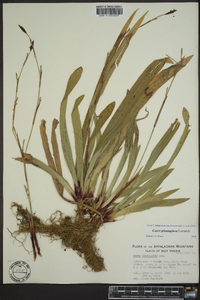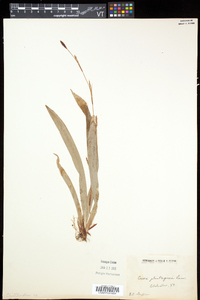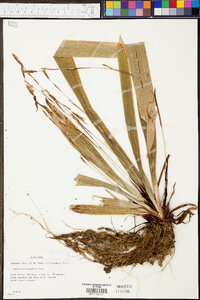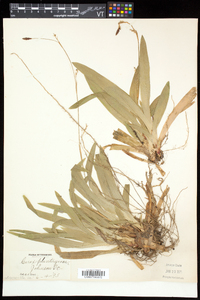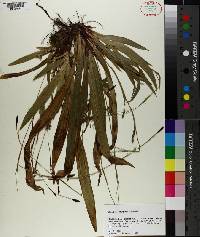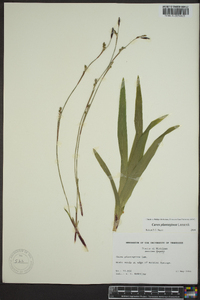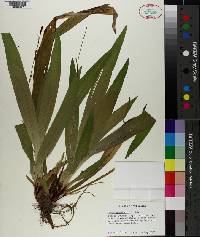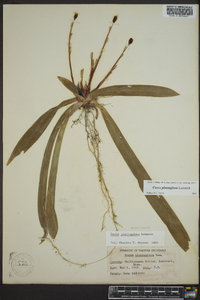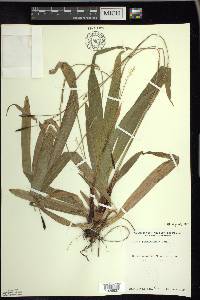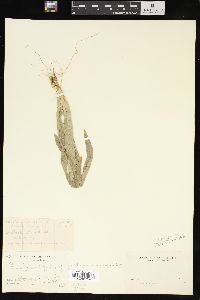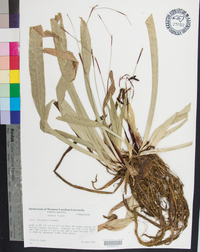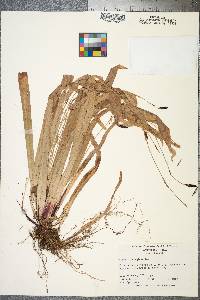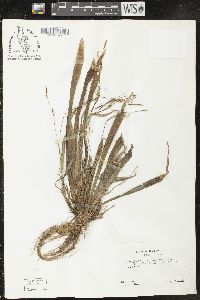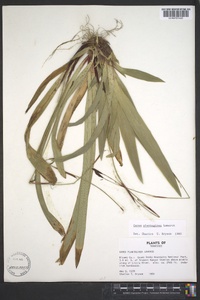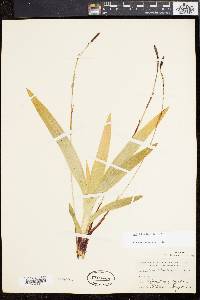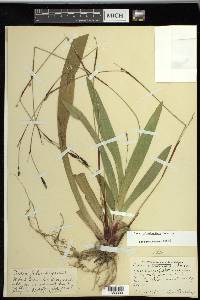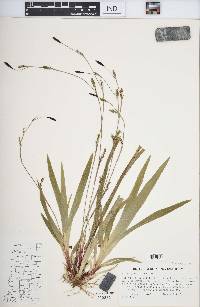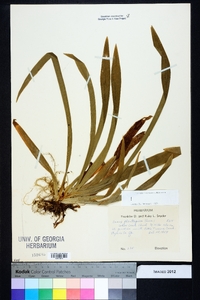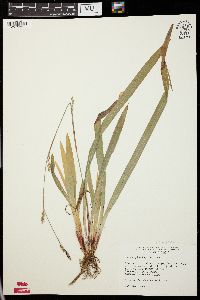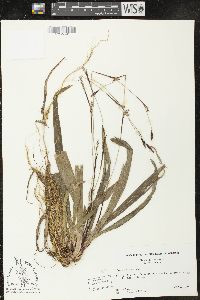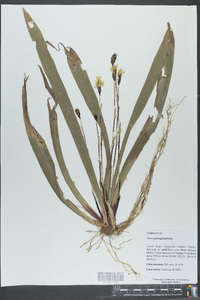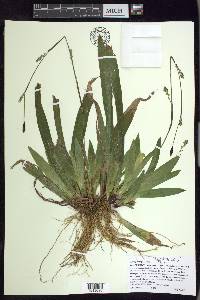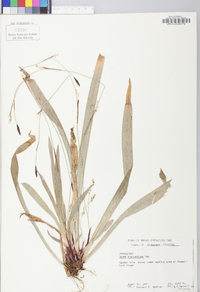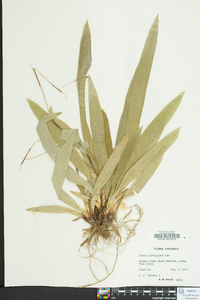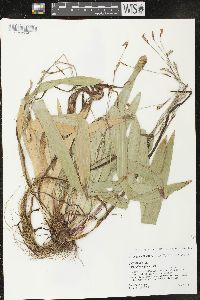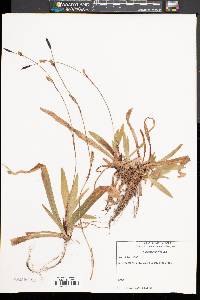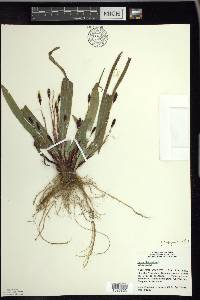Carex plantaginea
|
|
|
|
Family: Cyperaceae
Plantain-Leaf Sedge, more...plantainleaf sedge
|
Plants densely cespitose. Culms lateral, erect or ascending, usually overtopping vegetative shoots, 24-54 cm × 0.7-1 mm. Leaves: basal sheaths purple, 7-18 mm; blades erect or ascending, evergreen, midrib and 2 lateral veins strongly developed, 14-42 cm × 8-32 mm, older leaves often shriveling or dead at tips. Inflorescences: spikes 3-5 per culm, scattered; peduncle of pistillate spikes erect or spreading, rarely drooping, exserted 0-18 mm; bracts from middle and proximal portions of culms reduced, 0.8-2 cm × 2-3.5 mm. Pistillate spikes the proximal basal, 8-30 × 4-7 mm. Staminate spike 1, pedunculate, oblanceolate to linear, 8-20 × 2-3.5 mm. Pistillate scales slightly keeled, 3.2-4.2 × 1.8-2.2 mm, midribs green, margins hyaline with purple outward, apex cuspidate to acuminate to acute. Staminate scales 3-6 × 1.5-2 mm, midveins green or purple, margins dark purple, apex obtuse. Anthers 3.2-4.2 mm. Perigynia (4-)9-13(-15) per spike, overlapping, finely veined, elliptic, 3.7-4.9 × 1.6-2 mm; beak constricted. Achenes ovoid, 2.2-2.7 × 1.5-1.9 mm, sides flat to slightly concave at maturity, tightly fitting in perigynia. Style ascending from achene through entire orifice. 2n = 50, 52. Fruiting spring. Rich, moist, deciduous or mixed deciduous-evergreen forests, on slopes along streams or along edges of moist depressions, southward in mountain gorges; 100-600 m; N.B., Ont., Que.; Conn., Ga., Ind., Iowa, Ky., Maine, Md., Mass., Mich., Minn., N.H., N.J., N.Y., N.C., Ohio, Pa., S.C., Tenn., Vt., Va., W.Va., Wis. Tufted, 3-6 dm; fertile stems triangular, roughened on the angles, purple at base; basal sheaths purple; lvs of the sterile shoots elongate, often surpassing the fertile stems, 10-30 mm wide, roughened on the margins and toward the tip on the main veins; lvs of the fertile stem reduced to bladeless or nearly bladeless purple sheaths; terminal spike staminate, 1-2 cm, purplish, long-peduncled; pistillate spikes 2-4, 1-3 cm, scattered, the lowest on a basal peduncle to 2 cm; pistillate scales acuminate to cuspidate; perigynia 4-15, crowded and overlapping, 3.7-5 mm, finely many-nerved as well as 2-ribbed, sharply trigonous, elliptic in outline, constricted into a short, oblique beak with entire orifice; achene sharply trigonous; 2n=50, 52. Rich moist woods; N.B. and s. Que. to Minn., s. Ind., Ky., N.J., Md., and in the mts. to n. Ga. Tufted, 3-6 dm; fertile stems triangular, roughened on the angles, purple at base; basal sheaths purple; lvs of the sterile shoots elongate, often surpassing the fertile stems, 10-30 mm wide, roughened on the margins and toward the tip on the main veins; lvs of the fertile stem reduced to bladeless or nearly bladeless purple sheaths; terminal spike staminate, 1-2 cm, purplish, long-peduncled; pistillate spikes 2-4, 1-3 cm, scattered, the lowest on a basal peduncle to 2 cm; pistillate scales acuminate to cuspidate; perigynia 4-15, crowded and overlapping, 3.7-5 mm, finely many-nerved as well as 2-ribbed, sharply trigonous, elliptic in outline, constricted into a short, oblique beak with entire orifice; achene sharply trigonous; 2n=50, 52. Rich moist woods; N.B. and s. Que. to Minn., s. Ind., Ky., N.J., Md., and in the mts. to n. Ga. Gleason, Henry A. & Cronquist, Arthur J. 1991. Manual of vascular plants of northeastern United States and adjacent Canada. lxxv + 910 pp. ©The New York Botanical Garden. All rights reserved. Used by permission. From Flora of Indiana (1940) by Charles C. Deam Rather infrequent in the northern counties in rich woods. South of the lake area it is local and found mostly in humus on the wooded sandstone slopes of deep ravines, usually in dense shade and associated with Hydrophyllum appendiculatum. No specimen was found to confirm the report in Coulter's Catalogue from Tippecanoe County. ...... Indiana Coefficient of Conservatism: C = 10 Wetland Indicator Status: n/a |
|
|
|

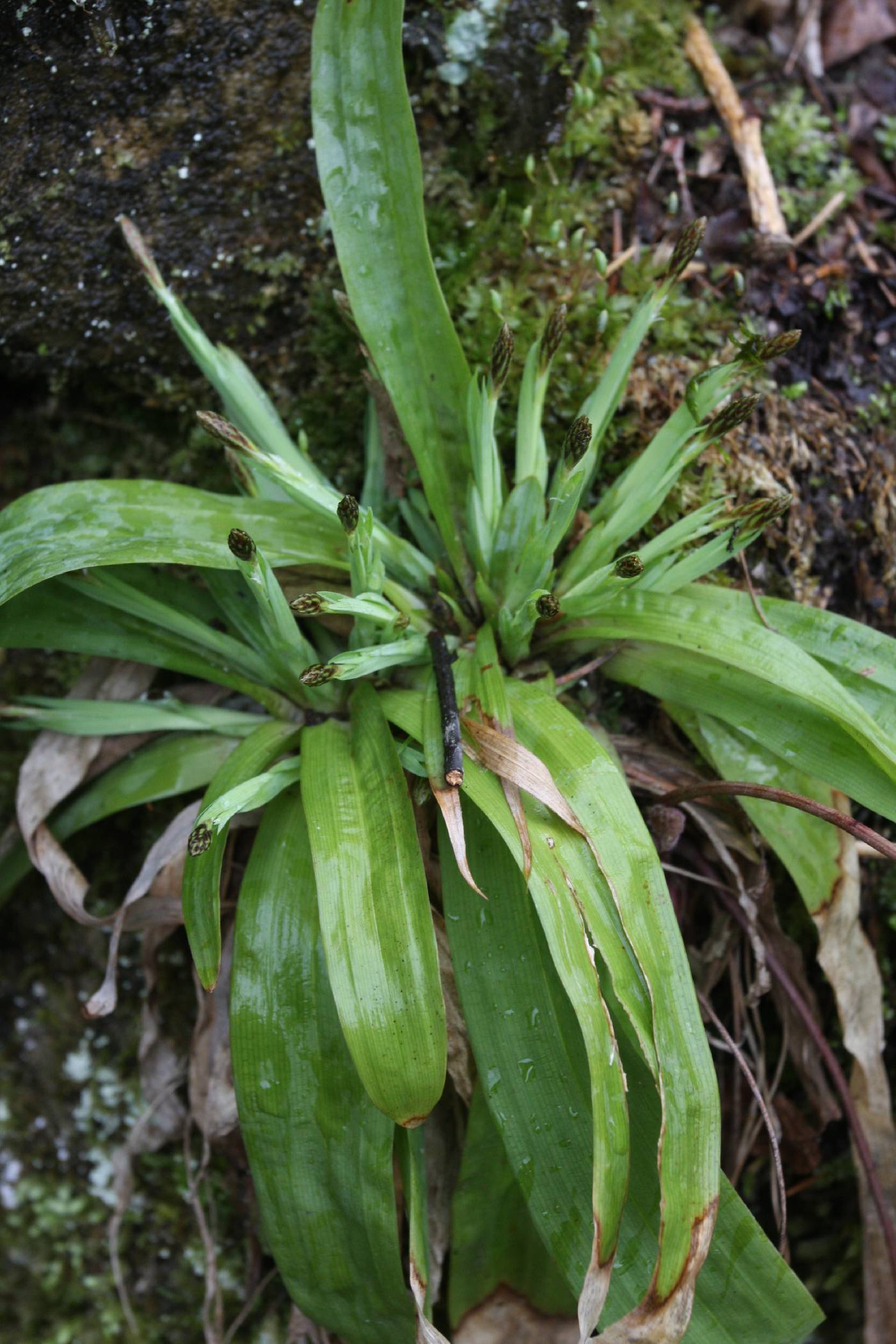
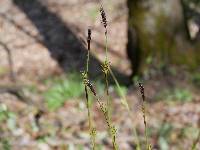
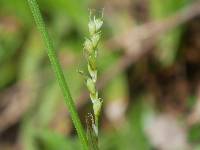
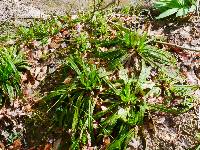
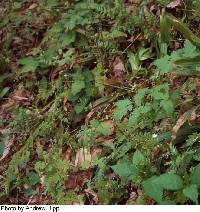
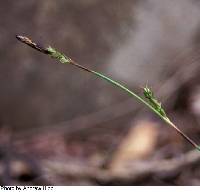
![Plant base [J. Sturner JS846 (MOR)] - The Morton Arboretum, West Side; DuPage Co., IL Carex plantaginea image](/imglib/h_seinet/seinet/misc/201403/imgid-318252_tn.jpg)
![Habit, field [J. Sturner JS846 (MOR)] - The Morton Arboretum, West Side; DuPage Co., IL Carex plantaginea image](/imglib/h_seinet/seinet/misc/201403/imgid-318254_tn.jpg)
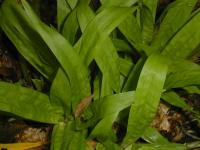
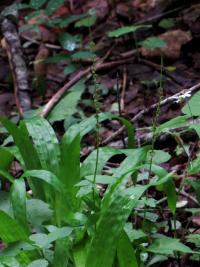
![Plant base [J. Sturner JS846 (MOR)] - The Morton Arboretum, West Side; DuPage Co., IL Carex plantaginea image](/imglib/h_seinet/seinet/misc/201403/imgid-318253_tn.jpg)
![Ligule [J. Sturner JS846 (MOR)] - The Morton Arboretum, West Side; DuPage Co., IL Carex plantaginea image](/imglib/h_seinet/seinet/misc/201403/imgid-318255_tn.jpg)
